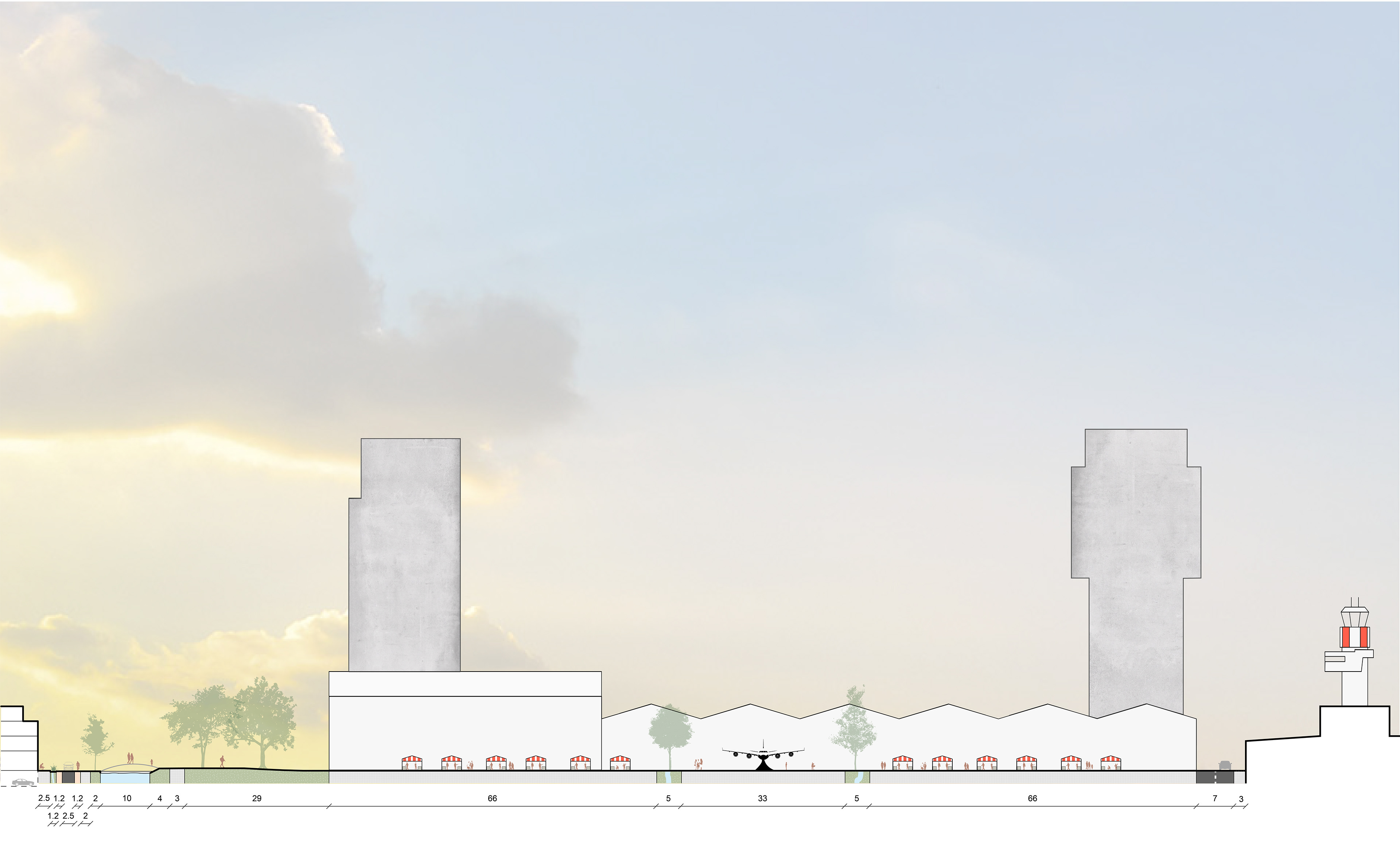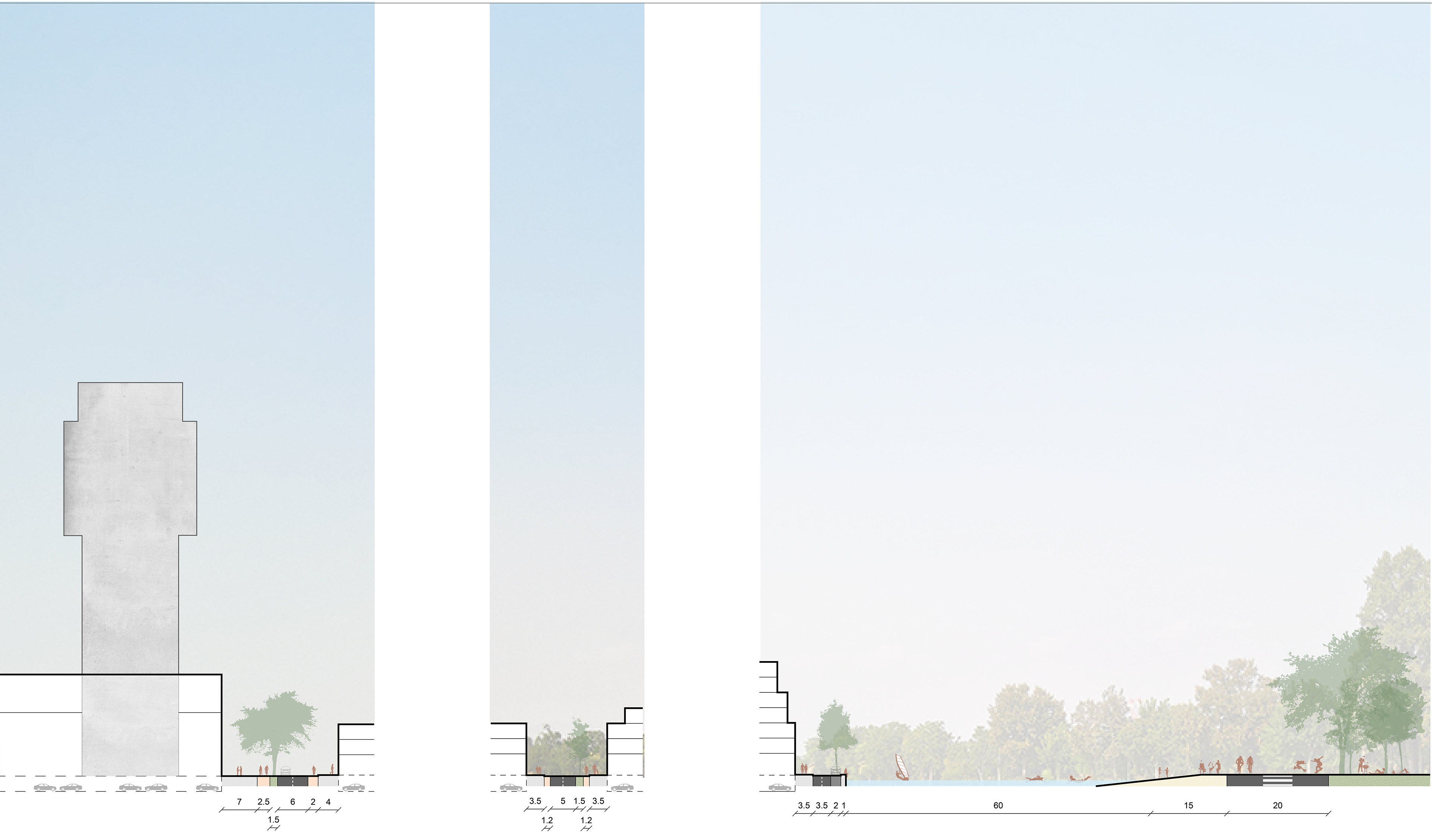Zestienhoven is known to most Rotterdammers as Rotterdam's airport. The urban area is distinguished by unique landscape features such as the immense openness, large paved surfaces such as the runway and taxi area (the part where passengers are dropped off and picked up) and the hangars.
The concept plan Festival City uses these unique features to transform Zestienhoven into an urban, raw residential environment in phases. This project is designed under the guidance of Ivar Branderhorst (Ziegler | Branderhorst) and Jaap van den Bout (Palmbout Urban Landscapes).
See the full project at:
https://studentenwerk.ravb.nl/2021/12/23/transformatie-zestienhoven-festival-city/
https://studentenwerk.ravb.nl/2021/12/23/transformatie-zestienhoven-festival-city/
First phase of development:
The northwestern part of the plan area will be issued to self-builders, here Rotterdammers can have their ideal residential environment built by themselves or in a collective organisation. This is subject to two conditions, half of the area must be ecologically green and a third of the land must be used for urban agriculture.
The hangars will be transformed into cultural hotspots combined with residential towers. The residents of the residential towers can establish their businesses in the transformed hangars, while the plinth provides space for cultural facilities such as theatres, cinemas and exhibition spaces. The residential towers are characterised by recognisable and high-quality architecture, these serve as catalysts of the area and contribute to its rugged and industrial atmosphere.
The taxiway part of the airport will be used as public space for markets and festivals, here urban farmers and makers from the hangars can trade their products.
The runway will become a park as long as two kilometres where there will be space for sports, barbecues and other leisure activities. By creating a park-walk with many trees, the park will be shielded from the A16.
Second phase development:
The next development is the construction of a new metro line towards Schiedam, with the new stop being Zestienhoven. This will allow a residential environment to be designed with a higher housing density, and the area will develop at a faster pace.
Expansion plan:
In the future, the residential area can expand further towards the east and west in a grid structure defined by the remaining, transformed hangars. This will turn Zestienhoven into a new urban district with its own unique identity.
The festival site will be relocated to the gigantic park where it can facilitate festivals the size of Lowlands or Pinkpop, for example. This lets Rotterdam play along as a festival city, a major contribution to culture. East of this festival site, the old, closed metro stop will be reopened and a route to the park will run through a green area around the Wilgenplas.


